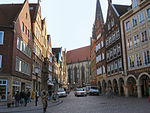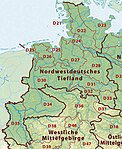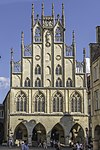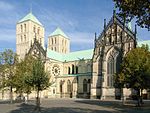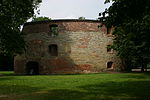Theater Münster
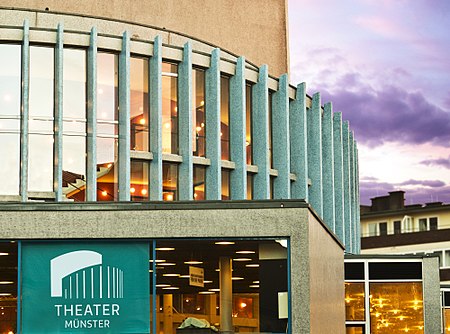
Theater Münster (formerly: Städtische Bühnen Münster) is a municipal theatre in Münster, North Rhine-Westphalia, Germany, for plays and music theatre (opera, operetta, musical, ballet). When it opened in 1956 it was regarded as the first new theatre building in Germany after World War II. It integrates some ruins of the former theatre and musical school destroyed in the war. The company performs music theatre, plays and theatre for young people (Junges Theater). Concert series of the orchestra Sinfonieorchester Münster also take place in its hall. The program includes further productions of the Niederdeutsche Bühne (Low German stage), guest performances, lectures and exhibitions.
Excerpt from the Wikipedia article Theater Münster (License: CC BY-SA 3.0, Authors, Images).Theater Münster
Neubrückenstraße, Münster Altstadt (Münster-Mitte)
Geographical coordinates (GPS) Address External links Nearby Places Show on map
Geographical coordinates (GPS)
| Latitude | Longitude |
|---|---|
| N 51.964722222222 ° | E 7.6288888888889 ° |
Address
Theater Münster (Stadttheater)
Neubrückenstraße 63
48143 Münster, Altstadt (Münster-Mitte)
North Rhine-Westphalia, Germany
Open on Google Maps
